Vietnamese tea culture, with a rich history that spans over 3,000 to 4,000 years, is intricately woven into the social and cultural tapestry of the nation. Once revered as a sacred beverage, tea was deeply connected to philosophical concepts from Confucianism and Buddhism. It is not merely consumed for flavor but serves as a vehicle for contemplation and harmony with nature. The ritual of tea drinking fosters relationships and acts as a medium for expressing hospitality, making it a cornerstone of Vietnamese social life. This cultural hallmark emphasizes not only the taste of tea but its role as a bridge connecting generations and communities.
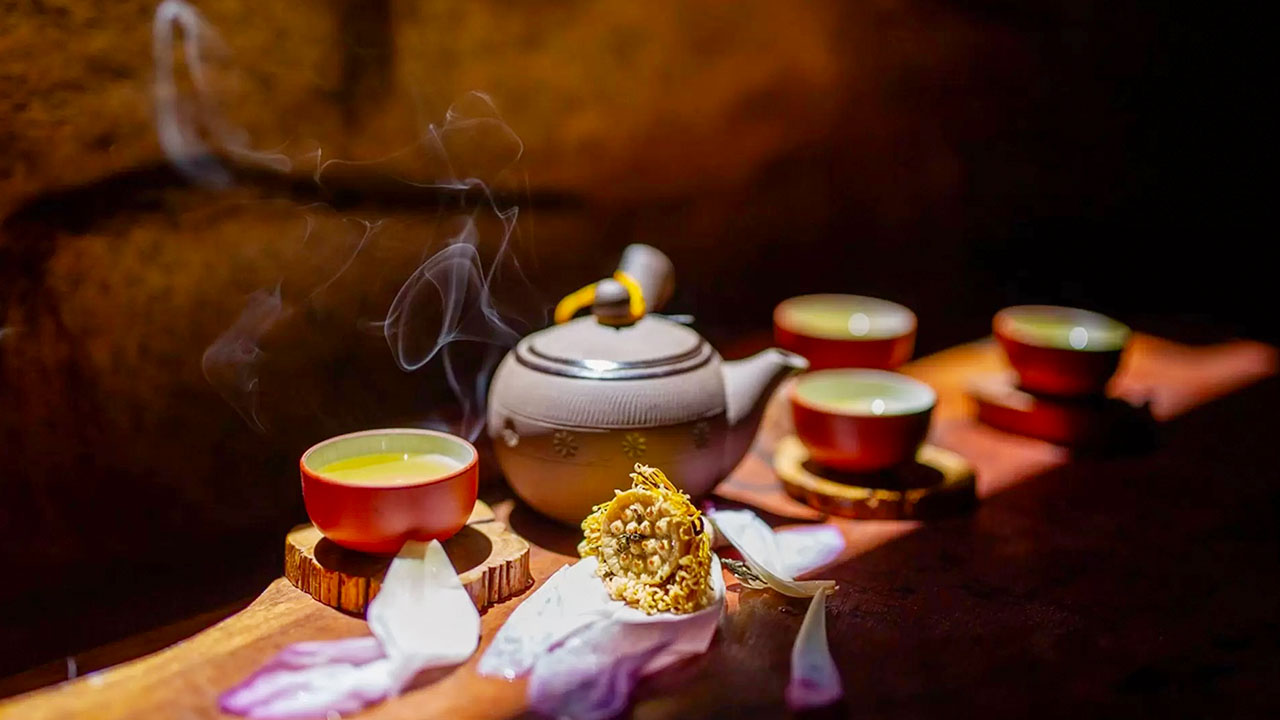
As the sun rises over Vietnam’s lush highlands, it casts a golden hue over tea plantations, creating a picturesque backdrop to this ancient practice. The delicate aroma of freshly brewed tea wafts through the air, inviting those nearby to pause and reflect. The vibrant tea culture is a manifestation of deep-rooted values that celebrate the beauty of sharing and connection. The beverage stands as a testament to the Vietnamese spirit, full of warmth, respect, and a zest for life.
Tea cultivation began in the serene highlands, where specific soil and climate conditions allowed for the growth of high-quality tea plants. Over centuries, Vietnam has absorbed various tea traditions, particularly from China. The French colonial era introduced modern cultivation techniques that diversified the tea varieties available today. Today, tea remains a cherished aspect of everyday life, ingraining itself into personal, familial, and communal experiences.
Historical Roots of Vietnamese Tea Culture
The historical roots of Vietnamese tea culture are deep and complex, tracing back to ancient rituals and philosophical engagement. The introduction of tea to Vietnam is often attributed to the early interactions with Chinese culture, which first introduced the beverage as a form of social communion. Tea was seen as a symbol of tranquility and was linked to the well-being of the spirit, embodying the essence of Confucian and Buddhist traditions. This cultural exchange revolutionized the Vietnamese social customs surrounding tea, creating a unique blend that highlights the importance of harmony, respect, and mindfulness.
- Ancient Consumption: Initially, tea was consumed by nobility and scholars for its stimulating properties, believed to enhance focus and meditative practice.
- Cultural Symbolism: Over time, tea became a universal symbol of hospitality, finding its place in rituals, festivals, and family gatherings throughout the centuries.
During the French colonial period, tea culture experienced significant transformation. The French introduced modern agricultural practices that shifted tea from local consumption to commercial production. This transition resulted in the establishment of vast tea plantations focusing on quality and variety, particularly in northern regions like Thai Nguyen and Moc Chau.
To understand the evolution and impact of tea culture in Vietnam, here’s a brief comparison of historical and contemporary aspects:
| Aspect | Historical | Contemporary |
|---|---|---|
| Commonly used varieties | Green tea, Lotus tea | Green tea, Black tea, Herbal teas |
| Preparation methods | Simple brewing, Rinsing | Meticulous steeping, Equipment usage |
| Social Functions | Ritual, Ceremony | Daily consumption, Trendy cafes |
| Cultural Significance | Sacred beverage | Social bonding and modern adaptation |
In sum, Vietnamese tea culture has evolved, blending traditional practices with modern influences while retaining its essence as a symbol of connection and respect, reflecting both historical significance and adaptability.
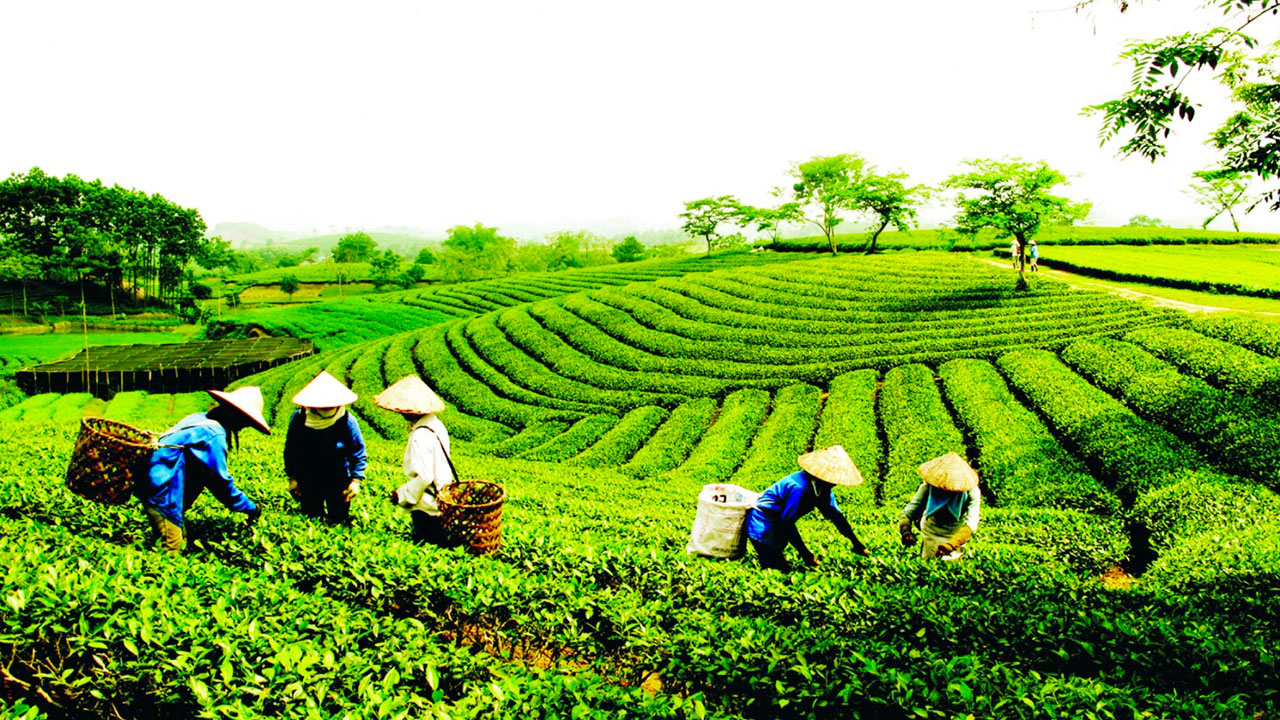
The Different Types of Vietnamese Tea
Vietnam boasts a kaleidoscope of tea varieties, each presenting unique characteristics that cater to diverse palates. The country’s tea culture thrives on this diversity, shaping its identity and illustrating regional influences.
One of the most treasured varieties is green tea, or trà xanh, known for its light and refreshing taste enriched with floral notes. Often cultivated in regions like Thai Nguyen, green tea is synonymous with daily rituals and the essence of Vietnamese hospitality. Lotus tea, or trà sen, reflects the beauty of Vietnam’s landscapes, offering an infusion of green tea with the delicate fragrance of the lotus flower. It embodies purity and is often regarded as a hallmark of Vietnamese hospitality. Here are some of the most commonly enjoyed tea varieties:
- Green Tea (Trà xanh): Light and refreshing; uplifting and vibrant.
- Lotus Tea (Trà sen): Infused with the essence of lotus; symbolizes beauty.
- Black Tea (Trà đen): Rich and robust; often served with milk or sugar.
- Jasmine Tea (Trà lài): Fragrant and floral; a popular accompaniment for various dishes.
- Herbal Teas (Trà thảo dược): Includes artichoke tea (trà atiso), known for its health benefits.
The integration of these varieties into daily life showcases the Vietnamese affinity for tea beyond mere consumption. It is embedded in family gatherings and social interactions, propelled by an ongoing dialogue between tradition and modern perspectives.
Furthermore, the following list distinguishes the primary types of tea based on their processing methods:
| Type of Tea | Processing Method | Flavor Profile |
|---|---|---|
| Green Tea | Leaves are steamed or pan-fried to halt oxidation | Fresh and grassy |
| Black Tea | Fully oxidized; leaves are allowed to darken | Bold and malty |
| Oolong Tea | Partially oxidized; skillfully crafted | Complex; floral and fruity notes |
| Herbal Tea | Infusions made from a variety of plants/herbs | Varies widely depending on ingredients |
The diverse spectrum of Vietnamese tea not only highlights the creativity and adaptability inherent in its culture but also reflects the remarkable interconnections history, locality, and personal experiences, ensuring that each cup tells a story of its own.

Traditional Tea Brewing Methods in Vietnam
Traditional tea brewing methods in Vietnam are foundational in preserving the rich tapestry of its culture, emphasizing meticulous practices that reflect respect for the ingredient. Tea preparation transcends simple consumption; it is an artful ritual that nurtures mindfulness and connection among participants. The brewing process is almost meditative, where each step is performed with deliberate care transforming the act of tea preparation into a sacred experience.
The initial phase involves warming the teapot and tea cups with boiling water, establishing the right temperature for brewing. Subsequently, dried tea leaves are rinsed with boiling water a brief yet essential step that purges any dust and revives the leaves. In a moment reminiscent of a gentle embrace old friends, this quick rinsing invites the tea to open up, yielding enchanting flavors that are often savored over shared stories.
One of the most significant aspects of traditional Vietnamese tea brewing is the multi-infusion method. The initial infusion sets the stage, while further infusions invite deeper and more robust flavors. The meticulous attention to detail highlights a profound understanding of tea and its properties.
Typical Traditional Brewing Methods:
- Pre-Warm: Warming teapot and cups to ensure proper heat retention.
- Rinse the Leaves: Brief rinse to cleanse and awaken the tea leaves.
- First Infusion: Fill the pot to the brim; cover and allow to steep.
- Subsequent Infusions: Reuse the leaves for further brewing, exploring the changing flavors.
| Step | Description | Importance |
|---|---|---|
| 1. Pre-Warm | Use boiling water to warm the teapot and cups | Ensures optimal brewing temperature |
| 2. Rinse | Quick rinse of leaves with boiling water | Cleans and preps the leaves for flavor extraction |
| 3. Infuse | Fill the pot and let it steep, gathering rich flavors | Establishes tea’s character and complexity |
| 4. Repeat Infusions | Strain and add more boiling water for multiple rounds | Extracts layers of flavor, enhancing the experience over time |
In this way, the act of brewing tea in Vietnam emerges as a communicative ritual that bridges gaps between generations, drawing together families and friends around a common tradition. Each steep deepens connections and fosters dialogue, imbuing the experience with layers of meaning underscoring the profound respect for both the beverage and those who share it.
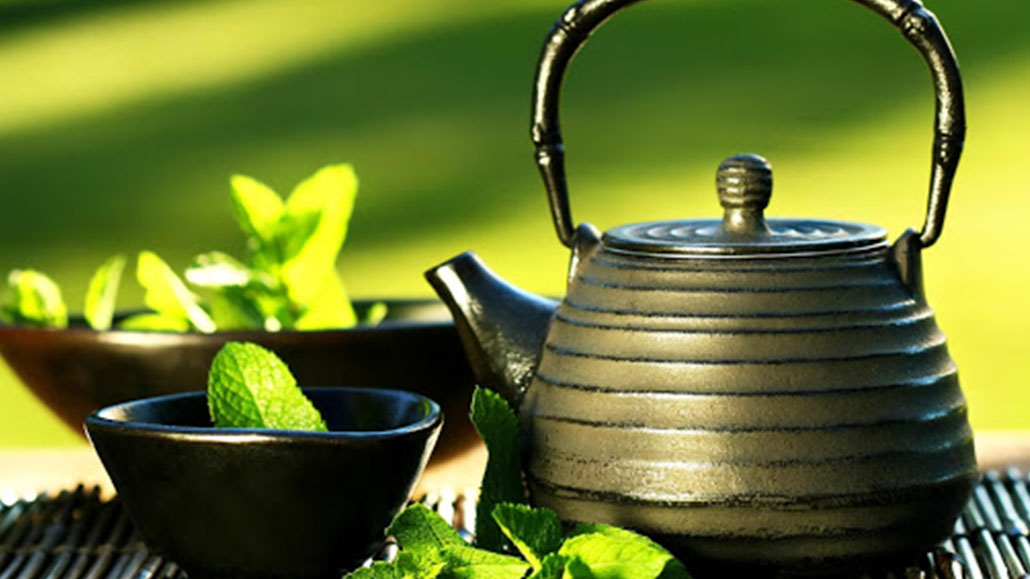
The Role of Tea in Vietnamese Daily Life
Tea plays an integral role in Vietnamese daily life, embodying a symbol of hospitality, respect, and connection. It serves not only as a beverage but also as a channel for social interactions and shared experiences. The act of sharing tea, often within the embrace of family and friends, fosters bonds that transcend the limitations of daily life.
In traditional households, tea is often served during meals and conversations, creating a warm atmosphere where stories are shared, laughter echoes, and memories are formed. This communal aspect emphasizes the importance of personal connections, allowing individuals to express their emotions intimately and meaningfully.
During significant life events, such as weddings and funerals, tea assumes heightened importance, connecting participants to their heritage and ancestors. Throughout these ceremonies, tea serves as a gesture of respect and gratitude, reinforcing relationships within families and communities. The mindfulness practiced during these moments reiterates the cultural significance of tea, allowing individuals to reflect on their lives while honoring their shared past.
Moreover, tea isn’t confined to formal settings; its presence is felt across various aspects of daily life from bustling markets to rustic street corners, where vendors serve steaming cups to locals and travelers alike. This accessibility in sharing tea marks its significance as a cultural staple that reflects Vietnamese hospitality and warmth.
Social Functions of Tea in Daily Life:
- Connection to Heritage: Acts as a vessel for honoring traditions during familial gatherings and ceremonies.
- Mechanism for Mindfulness: Offers a chance to pause and engage in reflection, tapping into moments of tranquility amid daily routines.
- Expression of Hospitality: Emphasizes warmth and friendliness toward guests, creating a welcoming atmosphere.
| Aspect of Daily Life | Role of Tea | Significance |
|---|---|---|
| Family Gatherings | Central to conversations and interactions | Embeds a sense of unity and connection |
| Ceremonial Rites | Served during significant events to honor spirits | Deepens cultural respect and gratitude |
| Social Engagement | Accessible in public spaces, fostering community ties | Strengthens social networks and collective identity |
In essence, tea in Vietnam is more than a beverage; it is the heartbeat of daily interactions, a facilitator of emotional bonds, and a poignant reminder of traditions that breathe life into everyday experiences.
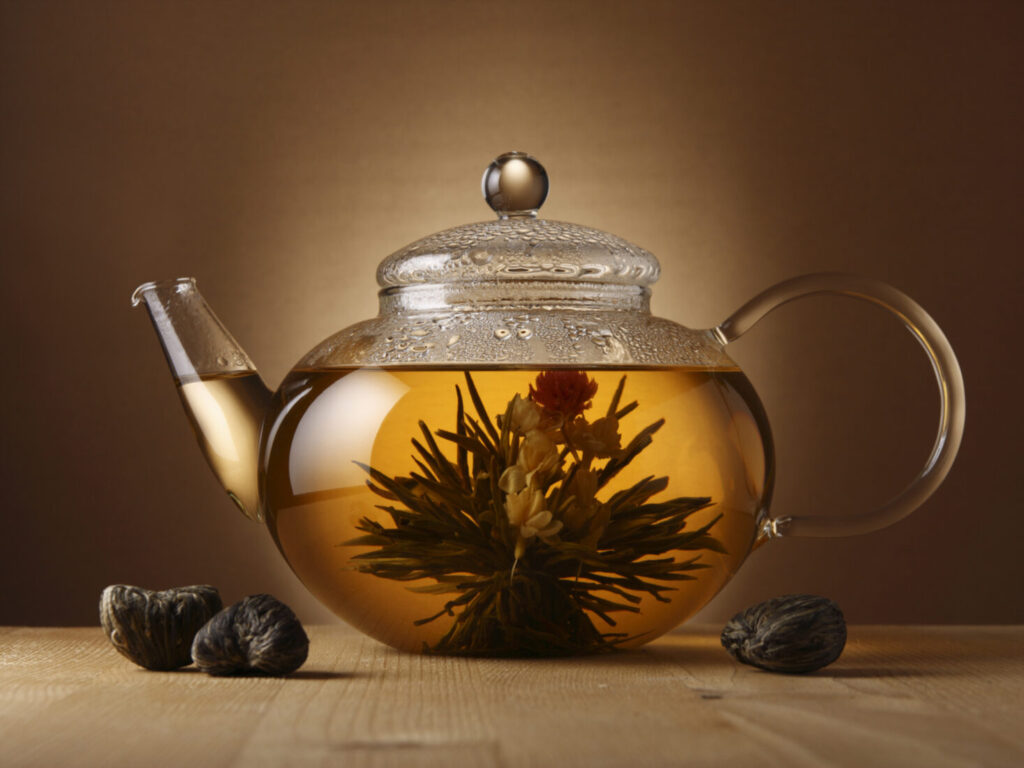
Vietnamese Tea Ceremonies and Rituals
Vietnamese tea ceremonies and rituals represent an exquisite fusion of tradition and spirituality, reflecting fundamental values of respect, hospitality, and connection to heritage. These ceremonies are deeply rooted in cultural practices, with intricate processes instilling a sense of dignity and mindfulness throughout the ritual.
An important ceremony is the wedding tea ceremony, known as Đám Hỏi or Ăn Hỏi. This significant event occurs prior to marriage, symbolizing gratitude and the couple’s commitment to family bonding. During the ceremony, the couple engages in serving tea to their parents and families dressed in traditional attire, called Áo Dài, reflecting the importance of familial respect and cultural customs.
The process of performing these ceremonies reflects a meticulous balancing act between reverence and joy. Each ingredient, movement, and moment is intentional, helping foster a deep sense of connection among participants. This becomes a celebration not only of the couple’s union but also of familial ties, loyalty, and shared histories.
Additionally, tea ceremonies often find their way into various social events, from holiday celebrations to personal gatherings. These occasions serve as platforms for families to pass down wisdom and cultural heritage, encouraging younger generations to cultivate appreciation for traditional tea practices.
Notable Aspects of Tea Ceremonies:
- Cultural Significance: Each ceremony reinforces cultural traditions, binding generations through shared practices.
- Ritualistic Preparation: Involves a sequence of thoughtful steps elevating tea serving to an art form, filled with symbolic meanings.
- Community Engagement: Events like weddings serve as unifying forces among relatives and friends, enhancing social cohesion.
| Ceremony Type | Key Features | Emotional Significance |
|---|---|---|
| Wedding Tea Ceremony | Involves the couple serving tea to families | Strengthens familial bonds and celebrates unity |
| Lunar New Year Tea | A shared moment of reflection and well-wishing throughout families | Reinforces cultural identity and collective hope |
| Funeral Tea Ceremony | Offers respect to ancestors and a moment of mourning | Serves as a poignant reminder of shared legacies |
Through these traditional rituals, Vietnamese tea ceremonies create opportunities for deep reflection and meaningful connections, offering the participants an avenue to engage with their cultural roots. The delicate interplay love, respect, and heritage enriches the experience, ensuring that ceremonial tea drinking remains timeless.

Popular Regions for Tea Cultivation in Vietnam
Vivid landscapes and favorable climate conditions in Vietnam have given rise to several prominent tea cultivation regions, reflecting the country’s agricultural heritage and commitment to quality. The tea-producing provinces, particularly in the northern highlands, stand out due to their rich soil and ideal weather, both crucial for cultivating premium tea varieties.
Among them, Thai Nguyen, Phu Tho, and Nghe An are regarded as the most celebrated regions for tea production. Known for their lush tea plantations, these areas yield a diverse array of tea types, including green tea, oolong, and various aromatic specialties.
Thai Nguyen, the most renowned, is known throughout the world for its exquisite green tea, whose unique flavor profile has garnered both national and international recognition. As tea is harvested from these verdant hills, local farmers engage in traditional methods while incorporating modern agricultural techniques, resulting in high-quality products that appeal to a global market.
Key Tea Regions in Vietnam:
- Thai Nguyen:
- Renowned for its green tea, widely regarded as some of the best in the world.
- The rich history and heritage of tea cultivation there embody the essence of Vietnamese tea culture.
- Phu Tho:
- Home to a variety of tea plants, known for its delicate flavors and fragrant aroma.
- Represents an integration of traditional cultivation methods with modern agricultural science.
- Nghe An:
- Offers diverse tea varieties, including both green and herbal teas.
- The lush terrain and favorable climate position it as an emerging highlight in tea cultivation.
| Region | Major Tea Types | Unique Characteristics |
|---|---|---|
| Thai Nguyen | Green tea | Exceptional clarity and refreshing taste |
| Phu Tho | Oolong, Jasmine tea | Thick, rich body and aromatic fragrances |
| Nghe An | Herbal teas | Blend of local herbal varieties enhancing wellness |
The importance of these regions extends beyond commerce; they represent cultural legacies that echo through the rolling hills and lush valleys. As producers continue to uphold and innovate their agricultural practices, the legacy of tea culture in these regions becomes not only a source of pride but also an enduring connection to Vietnam’s history.
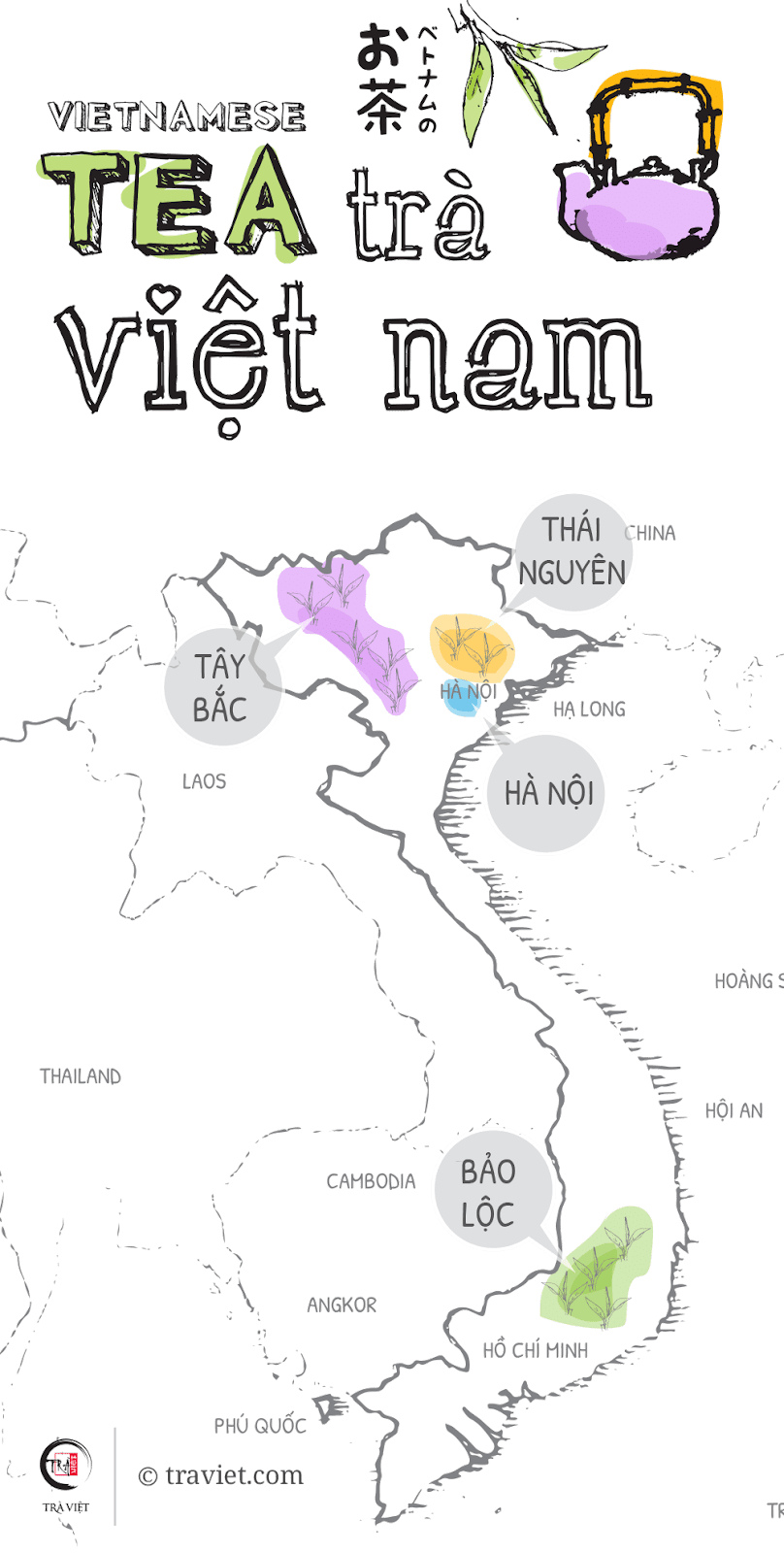
The Significance of Scented Teas in Vietnamese Culture
Scented teas hold a unique and cherished place within Vietnamese culture, embodying not only distinctive flavors and aromas but also rich traditions and shared social experiences. The practice of blending tea with fragrant flowers, such as jasmine and lotus, conveys meanings that go beyond taste; it speaks to the cultural identity and hospitality inherent in Vietnamese society.
Lotus-scented tea, commonly known as trà sen, is especially significant, with historical ties to the notion of purity and tranquility. This tea is often served as a warm gesture during gatherings and signifies a deep bond of respect and appreciation among guests. It embodies serenity, offering comfort and a sensory experience that fosters social connections.
The importance of scented teas is also rooted in their health benefits a fusion of well-being and luxury. These herbal-infused drinks are renowned not just for their flavors but also for their medicinal properties, promoting relaxation and balance in daily life.
Various Popular Scented Teas:
- Jasmine Tea (Trà lài):
- Known for its intoxicating aroma and smooth flavor.
- Often enjoyed as an accompaniment to meals or social gatherings.
- Lotus Tea (Trà sen):
- Offers a unique infusion capturing the essence of the lotus flower.
- Represents peace and is a tribute to mindfulness.
| Type of Scented Tea | Flavor Profile | Cultural Significance |
|---|---|---|
| Jasmine Tea | Floral, sweet | Celebrated for warmth and hospitality |
| Lotus Tea | Light, fragrant | Symbolizes purity and a connection to heritage |
The artistry involved in both preparation and presentation makes scented teas an integral part of daily life and rituals. As they elicit fond memories and celebrations, scented teas create rich experiences that resonate with the essence of Vietnamese cultural identity.

Health Benefits Associated with Vietnamese Teas
Vietnamese teas, particularly herbal and scented varieties, are celebrated not just for their delightful flavors but also for their vast array of health benefits. Grounded in traditional medicine, many varieties of tea are believed to provide healing properties that enhance both physical and emotional well-being.
For instance, herbal teas made with ingredients like lotus seeds, ginger, and chrysanthemum are lauded for their medicinal properties. Lotus seed tea is believed to promote relaxation and improve sleep quality, while ginger tea aids digestion and maintains warmth in the body. These naturally derived remedies reflect an intrinsic relationship tea consumption and health, illustrating how nature aligns with wellness in Vietnamese culture.
Furthermore, examining the health benefits of Vietnamese teas reveals that these beverages offer more than transient enjoyment; they promote ongoing vitality. Daily tea consumption serves as both a nurturing ritual and a means to foster habits that encourage a balanced lifestyle.
Key Health Benefits of Different Teas:
- Lotus Tea:
- Reduces stress and anxiety; improves sleep.
- Ginger Tea:
- Aids digestion; alleviates nausea and headaches.
- Chrysanthemum Tea:
- Detoxifies the body; enhances skin health.
| Type of Tea | Notable Health Benefits | Popularity in Traditional Medicine |
|---|---|---|
| Green Tea | High in antioxidants; boosts metabolism | Commonly recommended for weight management |
| Herbal blends | Idea of balance; aids in fever reduction | Integral in traditional healing practices |
| Scented teas | Uplifts mood; fosters relaxation | Important for medicinal and social purposes |
Through health-oriented practices, Vietnamese teas serve as bridges linking a deep appreciation for culture and well-being. Each cup is a celebration of both the ancient art of tea and an ever-evolving commitment to holistic living.
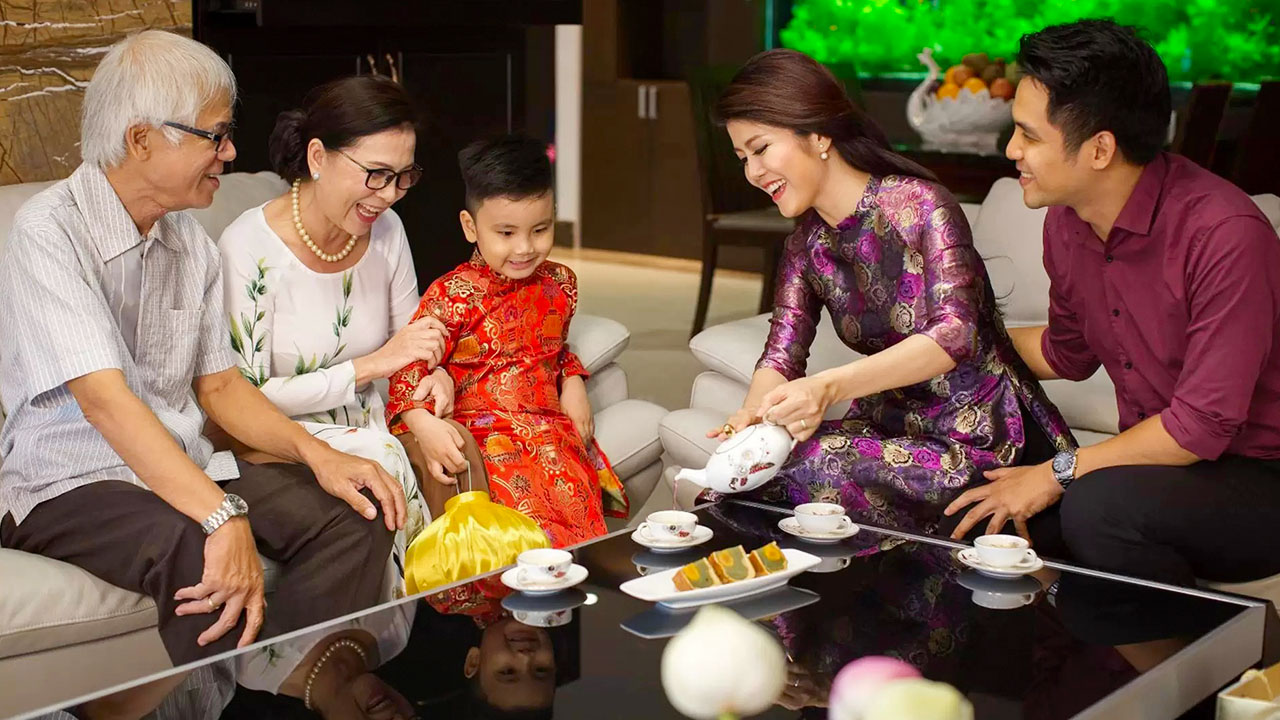
The Impact of French Colonization on Tea Practices in Vietnam
The era of French colonization substantially influenced the landscape of Vietnamese tea culture, shaping both cultivation practices and social traditions associated with tea consumption. As colonial rule took hold, the French introduced modern agricultural techniques, which pivoted tea cultivation toward export-oriented practices, significantly altering local customs.
During this period, Vietnamese tea transitioned from being predominantly a domestic beverage to a commercial crop recognized for its quality in international markets. Colonial powers cultivated high-quality tea plants in regions like Moc Chau and Thai Nguyen, ensuring that Vietnam could compete on a global scale. These changes led to the establishment of larger tea plantations, facilitating an economy that increasingly relied on tea as a cash crop.
Furthermore, the introduction of afternoon tea a staple of British colonial culture began to influence Vietnamese tea practices, merging into social interactions within urban settings. This transformation encouraged social gatherings in tea houses, where traditional practices fused with new habits that catered to the evolving tastes of society.
To illustrate the contrasts induced by colonization, consider the following aspects:
| Aspect | Before Colonization | During and After Colonization |
|---|---|---|
| Cultivation Practices | Focused on local consumption; diverse methods | Adoption of modern agricultural techniques |
| Tea Varieties | Rich array of indigenous teas | Shift towards export-oriented high-quality varieties |
| Social Practices | Community-based sharing | Emergence of tea houses and café culture |
The impact of French colonization remains a double-edged sword; while it contributed to the modernization of tea production, it also initiated a shift in cultural perceptions, forcing Vietnamese tea to balance its indigenous roots against the backdrop of foreign influence. Today, this historical context serves as a lens through which the adaptability and resilience of Vietnamese tea culture can be appreciated.
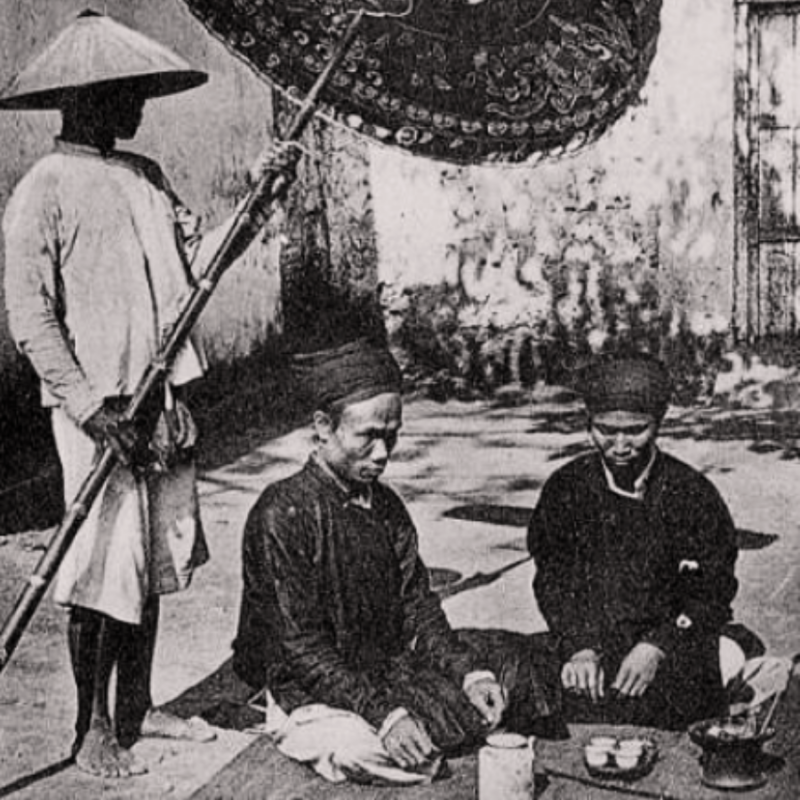
Modern Trends in Vietnamese Tea Culture
The contemporary landscape of Vietnamese tea culture is marked by a dynamic interplay between tradition and innovation. With the increasing globalization and modernization of Vietnamese society, tea continues to evolve, embracing new trends while respecting its deep-rooted heritage.
Modern tea shops now offer a variety of flavors and presentations that appeal to younger audiences. Beverages such as milk tea with boba pearls and fruit-infused teas are gaining popularity, showcasing a fusion of traditional flavors with contemporary aesthetics. This creativity reflects the adaptability of tea culture, allowing it to thrive amid changing consumer preferences. The incorporation of technology for marketing and distribution also plays a critical role, enhancing the reach of Vietnamese tea beyond borders.
Additionally, a resurgence of interest in organic and sustainable farming practices has emerged, with many producers now focusing on environmentally friendly methods of cultivation. This shift signifies a conscious effort to honor both consumer health and ecological integrity, aligning with the global trend toward sustainability.
Notable Trends in Vietnamese Tea Culture:
- Innovative flavors: Integration of traditional wines with modern teas, such as milk tea and fruit blends.
- Sustainability: Emphasis on organic and sustainable farming methods in tea cultivation.
- Global reach: Leveraging technology to market and distribute Vietnamese teas worldwide.
| Trend | Description | Impact |
|---|---|---|
| Fusion Beverages | Mixing traditional teas with modern flavors | Appeals to younger demographics |
| Organic Cultivation | Focus on sustainable farming methods | Aligns tea production with environmental values |
| Digital Marketing | Utilize online platforms for promotion | Expands accessibility and visibility globally |
In this modern era, Vietnamese tea culture personifies resilience and creativity, continuously evolving while maintaining its core values. As it adapts to societal changes, the essence of tea remains rooted in shared experiences and personal connections, allowing it to thrive in contemporary settings.
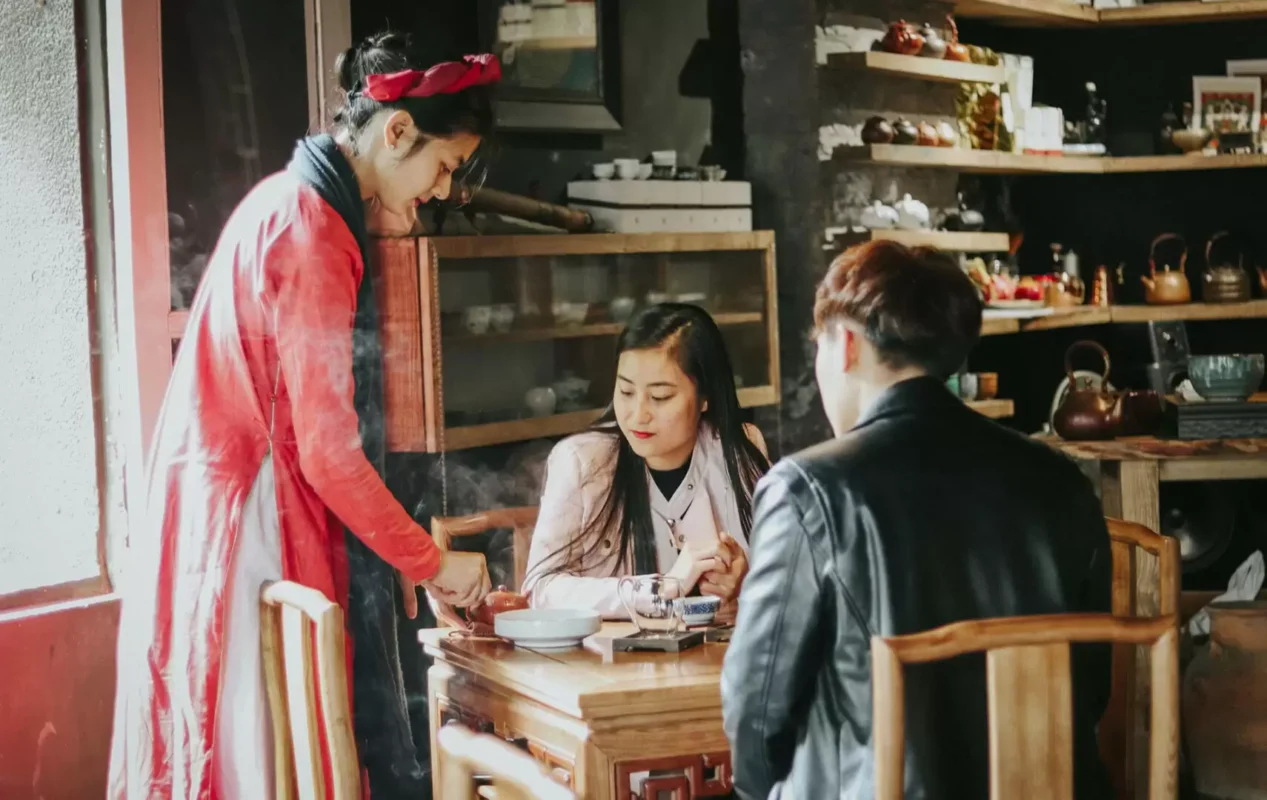
Fusion of Traditional and Contemporary Tea Experiences
As Vietnamese tea culture continues to evolve, there is a harmonious merging of traditional and contemporary experiences that reflects the adaptable spirit of the nation. This fusion captures the essence of what it means to drink tea in Vietnam today creativity and modernization embraced while respecting age-old traditions.
Traditional tea ceremonies emphasizing mindfulness and respect for nature remain appreciated, where each brewing step nurtures relationships and fosters connection among participants. The ritual of sharing tea is a sacred act that extends beyond mere flavor; it symbolizes hospitality and the spirit of togetherness, creating a space for meaningful exchanges and dialogue.
In contrast, modern tea houses are emerging, catering to a younger demographic with avant-garde twists on classic teas. This includes introducing innovative flavors like matcha lattes and vibrant bubble teas that introduce playful interpretations of tradition. They serve as social hubs where customers can engage in communal experiences while enjoying the comforts of new tastes.
Noteworthy Aspects of Traditional and Contemporary Fusion:
- Ceremonial Richness: Upholding the deliberate preparation of tea, enhancing familial and social bonds.
- Innovative Offerings: Merging modern ingredients and styles while honoring classic flavors.
- Intergenerational Dialogue: Workshops and events uniting older and younger generations in appreciation of tea.
| Aspect | Traditional Focus | Contemporary Twist |
|---|---|---|
| Brewing Rituals | Careful and intentional preparation | Inventive approaches to ingredients and techniques |
| Tea Types | Classic roots like green, lotus, and jasmine | New blends and fusions catering to modern tastes |
| Social Engagement | Community gatherings reflective of cultural heritage | Trendy cafes uniting diverse demographics |
This intricate blend of old and new reinforces the enduring relevance of Vietnamese tea culture in a globalized world, ensuring that it continues to resonate across generations. Each cup tells its own story, bridging past and present while encapsulating the heart of Vietnamese identity.
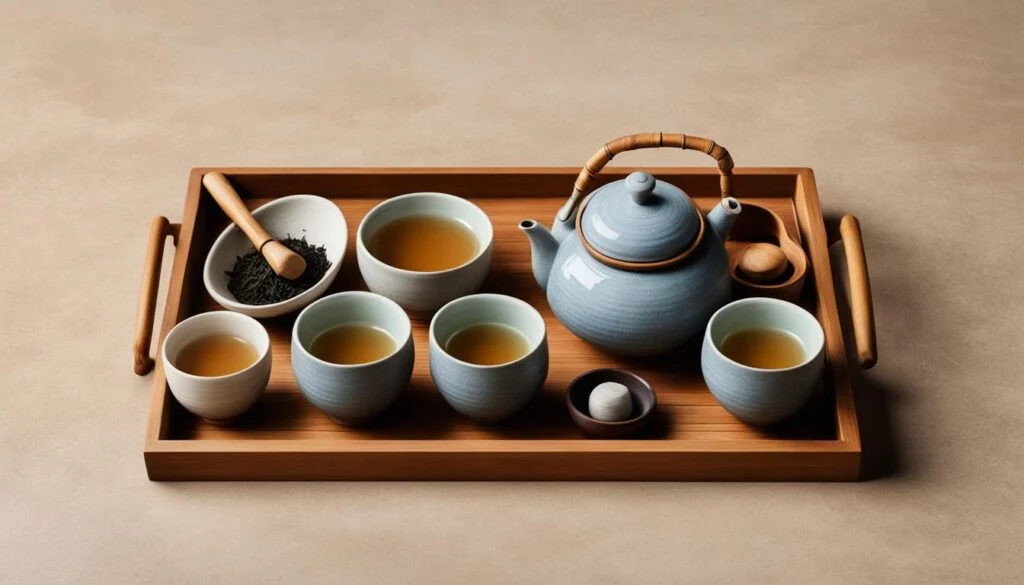
The Social Aspects of Tea Drinking in Vietnam
Tea drinking in Vietnam extends far beyond the mere act of consumption; it is immersed in social customs and traditions that underscore the significance of community and connection. The ritual of sharing tea catalyzes interactions, enabling individuals to engage meaningfully within familial and communal contexts.
In various settings be it a quaint roadside stall or a sophisticated tearoom the atmosphere is imbued with warmth and friendliness. Families gather over steaming cups of tea, where stories are shared and laughter fills the air. Events such as weddings, celebrations, and holidays often prominently feature tea, reinforcing its role as a unifying force that nurtures relationships.
Moreover, the experience of drinking tea often includes an open invitation for conversation, where topics varied widely encompass everything from daily joys to philosophical discussions. The act of sharing tea cultivates an environment of openness, allowing individuals to connect with one another on deeper emotional levels.
Key Elements of the Social Tea Experience:
- Family Gatherings: Frequently integral to meals and celebrations, tea nurtures close family ties through shared experiences.
- Cultural Celebrations: Signifies hospitality during special events, enhancing community bonding.
- Mindful Conversations: Creates a backdrop for reflective dialogue and exchange of ideas.
| Aspect of Social Life | Role of Tea | Significance |
|---|---|---|
| Celebrations | Served to guests to show warmth and hospitality | Deepens interpersonal relationships and appreciation |
| Everyday Connections | Central to family dynamics, maintaining familial links | Innate channel for expressing care and familiarity |
| Philosophical Dialogue | Inspires thoughtful conversations during tea sessions | Encourages introspection and cultivates a sense of belonging |
The embodiment of shared experiences through tea drinking illustrates the profound cultural values woven into Vietnamese society. As generations gather around the teapot, each cup becomes a vessel for nurturing community, preserving traditions, and fostering meaningful connections in daily life.
Vietnamese Tea in Global Context
In the global context, Vietnamese tea has garnered a recognition that extends beyond its borders. As the 7th largest tea producer and the 5th largest exporter worldwide, Vietnam has solidified its presence on the international tea scene, offering a rich diversity of products that cater to discerning tastes across the globe.
Vietnamese tea, characterized by its unique flavor profiles from smooth green teas of Thai Nguyen to the aromatic scented varieties is striving to capture the attention of consumers looking for authenticity in their tea experiences. The country’s tea industry has been proactively participating in global markets, focusing on both local consumption and international exports, thereby showcasing the richness and complexity of its offerings.
In addition to production, the art of Vietnamese tea preparation is gaining popularity in culinary circles, where chefs and tea enthusiasts are experimenting with innovative fusions that preserve the essence of traditional practices. Tea tasting events and international festivals provide memorable platforms to share the cultural significance of Vietnamese tea, creating connections with diverse audiences eager to explore its heritage.
Important Global Characteristics of Vietnamese Tea:
- Variety and Quality: Diverse offerings cater to global preferences while emphasizing traditional production methods.
- Cultural Exchange: International tea events foster connections, sharing the cultural narrative tied to each blend.
- Sustainability Practices: Growing interest in organic and sustainable farming methods aligns with global consumer trends.
| Global Aspect | Vietnamese Tea | Significance |
|---|---|---|
| Cultural Heritage | Represents deep-rooted traditions | Engages international audiences; promotes exchange |
| Diverse Product Lines | High-quality green, black, and herbal teas | Appeals to a broad consumer market |
| Sustainability Focus | Emphasis on organic practices | Aligns with global trends toward environmentally friendly products |
As Vietnamese tea continues to navigate the complexities of global markets, it retains the rich essence of its roots, facilitating connections through shared cultural experiences. The narrative surrounding Vietnamese tea echoes the sentiments of unity, respect, and connection, ensuring that its significance remains profound both at home and on the world stage.
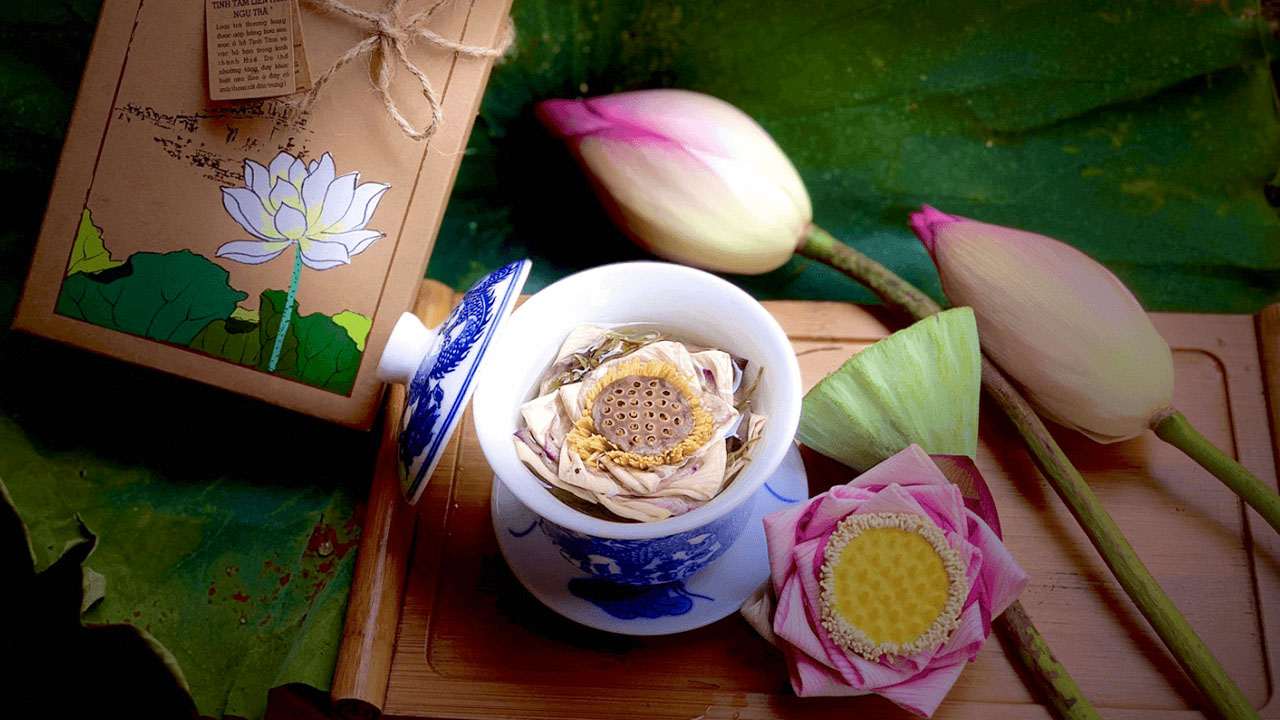
Prominent Figures in Vietnamese Tea Culture
Amid the rich landscape of Vietnamese tea culture, certain figures stand out as beacons of tradition and innovation, passionately advocating for the preservation and promotion of Vietnamese tea heritage. One notable figure is Nguyen Cao Son, a revered tea master celebrated for his dedication to the art of tea brewing. With a profound understanding of tea’s impact on health and social harmony, Son has elevated Vietnamese tea on the global stage, introducing its intricate flavors to international audiences.
Son’s contributions extend beyond mere brewing techniques; he actively engages in tea education, sharing his knowledge at various national and international events. Through his focus on traditional practices, he encourages younger generations to appreciate their heritage while also innovatively embracing modern influences.
Additionally, the Vietnamese tea industry is home to various skilled tea producers and farmers, who meticulously cultivate these cherished plants. Their commitment to fostering high quality and sustainability ensures that Vietnamese tea continues to thrive and resonate with enthusiasts worldwide.
Notable Contributions of Prominent Figures in Vietnamese Tea:
- Nguyen Cao Son:
- Advocates for traditional Vietnamese tea culture through education and practice.
- Represents Vietnam in international tea competitions and showcases its uniqueness.
- Local Farmers and Producers:
- Engage in sustainable practices and uphold quality standards in tea cultivation.
- Contribute to the evolution of Vietnamese tea through innovation while preserving heritage.
| Figure | Contribution | Significance |
|---|---|---|
| Nguyen Cao Son | Promotes traditional brewing techniques | Educates the public on the art and philosophy of tea |
| Tea Farmers | Focus on sustainable farming and premium tea production | Ensures high-quality offerings for global appeal |
The collective efforts of these figures highlight the evolving narrative of Vietnamese tea culture, ensuring that both revered traditions and modern practices coexist harmoniously. As custodians of this rich narrative, they embody the spirit of Vietnamese tea, fostering connections that bind communities, both locally and globally.
FAQs
- What are the most popular types of tea in Vietnam?
- The most popular types of tea in Vietnam include green tea (trà xanh), lotus tea (trà sen), black tea (trà đen), and herbal teas like artichoke tea (trà atiso).
- What is the significance of tea in Vietnamese culture?
- Tea is significant in Vietnamese culture as it symbolizes hospitality, respect, and connection among family and friends. It is often served during important ceremonies and daily gatherings.
- How has French colonization influenced Vietnamese tea culture?
- French colonization introduced modern agricultural techniques and the concept of cash crops, transforming tea production into a commercial economy while altering social customs surrounding tea drinking.
- What health benefits are associated with Vietnamese teas?
- Vietnamese teas, particularly herbal varieties, are known for their health benefits, including promoting relaxation, improving digestion, and boosting overall well-being.
- How do traditional and contemporary tea practices coexist in Vietnam?
- Traditional brewing methods emphasize mindfulness and community, while contemporary tea shops add innovative flavors and products, creating a dynamic and evolving tea culture that respects its roots.
Conclusion
Vietnamese tea culture stands as a rich representation of the country’s history, values, and community spirit. With over 3,000 to 4,000 years of tradition, tea has transcended mere consumption to become a symbol of hospitality, respect, and connection among people. The journey from the serene highlands to urban cafés showcases its remarkable diversity, emphasizing both its roots and adaptability in modern society.
Through the exploration of different types of tea, preparation methods, and social aspects of tea drinking, we witness how this beloved beverage forms the heart of community and culture. The fusion of traditional practices with contemporary trends further enriches the narrative, inviting younger generations into a world that celebrates heritage while embracing innovation.
Ultimately, as Vietnamese tea continues to gain recognition on the global stage, it serves not only as a cherished tradition but also as a bridge connecting lives, stories, and cultures across generations. Tea remains an enduring symbol of connection a ritual that invites reflection, communion, and joy into the warm hearts of all who partake.


